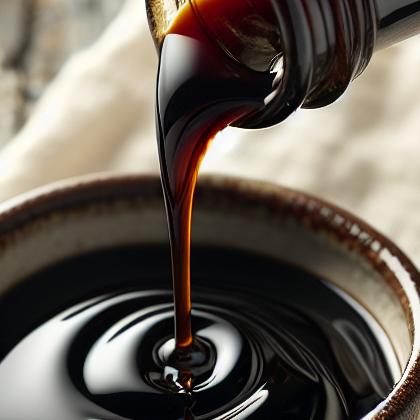Showing results for 'Balsamic Vinegar'
close
Balsamic Vinegar

Balsamic vinegar is a vinegar originating from Italy, increasingly popular throughout the world. The original, costly, traditional balsamic vinegar (Aceto Balsamico Tradizionale), is made from a reduction of cooked white Trebbiano grape juice, and used as a condiment. It has been produced in Modena and Reggio Emilia since the Middle Ages, being mentioned in a document dated 1046. Appreciated in the House of Este during the Renaissance, it is highly valued by modern chefs and gourmet food lovers.
Balsamic Vinegar Pairs With:
Food Item
Flavor Affinity Level

Did you know there are 53 food flavor pairings in my database for Balsamic Vinegar available. What you are seeing above is a random list of 30 items which pair with Balsamic Vinegar.
For the entire list, beautifully formatted, enter your email address and click the download button below, then I'll email it to you as a PDF.
Balsamic Vinegar Properties:
| Food Property | Type | Description |
|---|---|---|
| Flavor Profile | Sour | Balsamic vinegar is characterized by its sour taste, which is produced through the fermentation process of grape must. |
| Aroma | Volatile Compounds | Balsamic vinegar contains volatile compounds that contribute to its aromatic profile, often described as rich, complex, and slightly sweet. |
| Color | Maillard Reaction | Balsamic vinegar undergoes the Maillard reaction during the aging process, resulting in its dark brown color and deep flavor profile. |
| Nutritional Value | Macronutrients | Balsamic vinegar is low in calories and does not contain significant amounts of macronutrients such as fat, protein, or carbohydrates. |
| Micronutrients | Balsamic vinegar contains small amounts of micronutrients such as iron, calcium, and manganese. | |
| Chemical Composition | Acidity/Alkalinity (pH) | Balsamic vinegar has a pH level of around 2.5-3.0, giving it its characteristic acidity. |
| Cooking Behavior | Heat Conductivity | Balsamic vinegar can be used in cooking as a flavor enhancer or finishing touch, as it does not conduct heat like oils or fats. |
| Water Retention | Balsamic vinegar can be used to marinate and tenderize meats, as it helps retain moisture during the cooking process. |
Food Pairing App - Version 1.2.0
